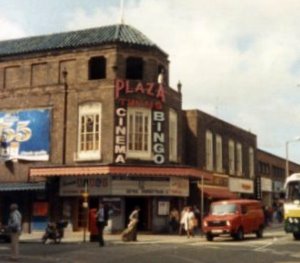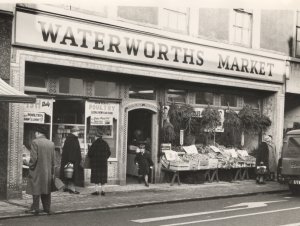Golden Sands are celebrating their 80th Anniversary this year. They describe themselves as “Right on the Beach at Kinmel Bay, Rhyl in sunny North Wales.” The following excerpts are from their 75th Anniversary brochure:
In the beginning 1933 to the 1940’s
“In 1933 the founder of the business, Arthur Jones, purchased the land upon which Golden Sands now stands. Soon bell frame tents, timber chalets and a large hall (the Pavilion) were erected. After long and difficult negotiations with the authorities, services such as sewers and gas were installed. A less determined man would have probably given up, but having spent his early life at sea, fought in the war with the Royal Naval Air Service, and then ran his own timber and building business, Arthur was not a man to give up easily and he persevered despite warnings from his accountant and wife! That he persued his dream in the era of the Great Depression with more than 3 million unemployed is even more remarkable”
In 1946..
“Golden Sands was flooded to a depth of several feet, but with his knowledge of the sea and the weather, Arthur had anticipated such a disaster and built accordingly. In addition he built stone groynes and sea defences the expenditure consuming almost every penny the camp made. Eventually in the 1950’s the sea wall was built. during the decades and even during the Towyn floods of 1989, Golden Sands suffered very little losses when land and camps around the area were flooded for several miles. This is a supreme testimony and tacit reminder that everyone connected with Golden Sands has cause to be grateful to his memory”
1950’s to 1960’s
“After the war, a new era of camping began. A new type of accommodation: the caravan became established in the early 50’s with such household names as Willerby and Bluebird leading the way in manufacturing 20′ long models. However luxurie such as running water and electricity were still a long way off”
1970’s to 1980’s
With customer demanding higher standards and foreign holidays taking a strong foothold, competition abroad and at home was intense. To compete, the old “Hi De Hi” image was no longer good enough and a huge programme of redevelopment of the camp was undertaken with the installation of all “mod-cons” – individual services to every caravan and concrete bases. In addition caravans were growing in size and were now up to 28′ long by 10′ wide costing some £700 and had even built-in showers! In 1967 the Sandpiper Club opened for the over 18’s only and was the first licenced premises on Golden Sands. Arthur Jones had been strictly against alcohol but the business had to move with the times”
1980’s – 2008
“The 80’s saw a very busy time with the continued development of the park to meet customer demands and the increased size of caravans. Elsewhere on the park, the chalets were upgraded, the Co-op camp next door was purchases and redeveloped, the Pavilion became licenced and in 1983 we achieved a milestone of 50 years. In 1996 we installed the indoor pool and in 2005 we finally said goodbye to the wooden chalets which had served us well.”
Golden Sands is still run by the third generation of the same family. The brochure goes on to say “That we have achieved this further wonderful milestone is also a fitting testimony to Arthur Jones, a remarkable man who had the vision and the determination to start Golden Sands in 1933.”
click on images to enlarge























